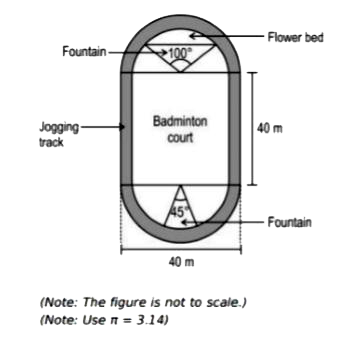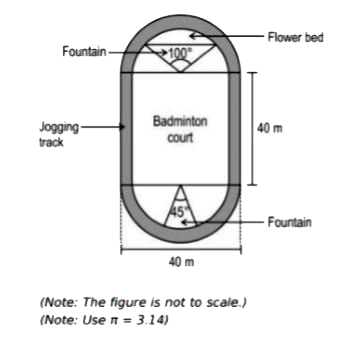The flask-shaped organ A at the centre of a flower is surrounded by a number of little stalks B having swollen tops which lie just inside the ring of petals.
Name B. What is the swollen top of B known as ?
Step-by-Step Solution:
1. Identify the central organ A: The flask-shaped organ at the center of the flower is known as the carpel, which is also referred to as the gynoecium. This is the female reproductive part of the flower.
2. Identify the surrounding structures B: The little stalks surrounding the carpel are known as stamens. The stamen is the male reproductive part of the flower.
3. Describe the swollen tops of B: The swollen tops of the stamens (B) are called anthers. The anther is the part of the stamen that produces pollen, which contains the male gametes.
4. Summarize the answer: Therefore, B is the stamen, and the swollen top of B is known as the anther.
Final Answer: B is the stamen, and the swollen top of B is known as the anther.
---
Topper's Solved these Questions
- HOW DO ORGANISM REPRODUCEBOOK - BETOPPERSCHAPTER - HOW DO ORGANISM REPRODUCEEXERCISE - WORKSHEET 3
67 Videos
- HEREDITY & EVOLUTIONBOOK - BETOPPERSCHAPTER - HEREDITY & EVOLUTIONEXERCISE - COMPETITIVE WORKSHEET
34 Videos
- LIFE PROCESSESBOOK - BETOPPERSCHAPTER - LIFE PROCESSESEXERCISE - COMPETITIVE WORKSHEET
82 Videos
Similar Questions
The flask-shaped organ X at the centre of a flower is surrounded by a number of little stalks Y having swollen tops which lie just inside the ring of petals.
Name the organ Y.
View SolutionThe flask-shaped organ X at the centre of a flower is surrounded by a number of little stalks Y having swollen tops which lie just inside the ring of petals.
Name the organ X.
View Solution
Knowledge Check
Shown below is the top view of a stadium. There is a badminton court at the centre. The stadium is surrounded by a jogging track. The track is semi-circular in shape at the top and the bottom of the court. The fountains converge at the centre of the respective semicircles. The jogging track has a uniform width of 2 m.

The cost of gardening is Rs 300/m2 and the area of the fountain next to the flower bed is 150 m2.
What is the cost of gardening the flower bed?ARs 39780BRs 45000CRs 59664DRs 84780Shown below is the top view of a stadium. There is a badminton court at the centre. The stadium is surrounded by a jogging track. The track is semi-circular in shape at the top and the bottom of the court. The fountains converge at the centre of the respective semicircles. The jogging track has a uniform width of 2 m.

If the rate of fencing is Rs 150/m, what is the cost of fencing the flower bed ONLY on the curved portion of its boundary?ARs 2355BRs 4710CRs 5233DRs 10110Two flasks A and B have equal volumes. The molecules in flask A are moving two times faster than the molecules in flask B. The number of molecules in flask A is eight times the number of molecules in flask B. Which of the following is true about the number of collisions with the walls?
AThe number of collisions with the walls in flask A is four times that in flasks B.BThe number of collisions with the walls in flask B ia four times that in flask A.CThe number of collisions with the walls in flask A is 16× that in flask B.DThe number of collisions with the walls in flask B is 16× that in flask A.
The flask-shaped organ X at the centre of a flower is surrounded by a number of little stalks Y having swollen tops which lie just inside the ring of petals.
What does the swollen top of organ Y contain ?
View SolutionThe dlask-shaped organ X at the centre of a flower is surrounded by a number of little stalks Y having swollen tops which lie just inside the ring of petals.
Out of X and Y, which one is the female part of flower ?
View SolutionThe dlask-shaped organ X at the centre of a flower is surrounded by a number of little stalks Y having swollen tops which lie just inside the ring of petals.
Which part of organ X contains gametes ?
View SolutionThe top part A of the flask-shaped reproductive organ X in the flower of a plant secretes a surgery substance into its lower part B which goes towards the bottom part C of the flask-shaped organ. When a tiny grain D coming from the top part E of another reproductive organ Y in the flower falls on part A, it grows a long tube F through the organ X in response to the sugary substance and reaches the bottom part C of flask-shaped organ to carry out fertilisation.
(a) What is (i) organ X, and (ii) organ, Y inside the flower?
(b) Name parts (i) A (ii) B, and (iii) C, of flask-shaped organ.
(c) Name (i) grain D, and (ii) part E of organ Y.
(d) Name the tube F.
(e) What is the phenomeon of growing a long tube in response to a sugary substance in the process of fertilisation in a flower known as?
View SolutionThe organs A of a tree have a large number of tiny pores called B on their surface. Each pores is surrounded by a pair of cells called C. the opening and closing of pores in A is controlled by C. the gas D present in air enters the organs A through pores B and utilised in food making process E. the gas F produced during process E goes out through te same pores B. what are A, B, C, D, E, and F?
View Solution
